Every year, thousands of workers in the United States are injured on the job, sometimes with permanent injuries or disabilities. This report summarizes hospitalizations, amputations, and eye losses reported by employers to OSHA from 2015 to 2021 with analysis by geographic region and industry sectors. OSHA estimates that this report covers approximately half of U.S. workers.
OSHA has resources to help employers and workers prevent injuries on the job. Learn about the most commonly reported severe injuries reported in your industry and how you can prevent these injuries from happening at your workplace by identifying and controlling hazards.
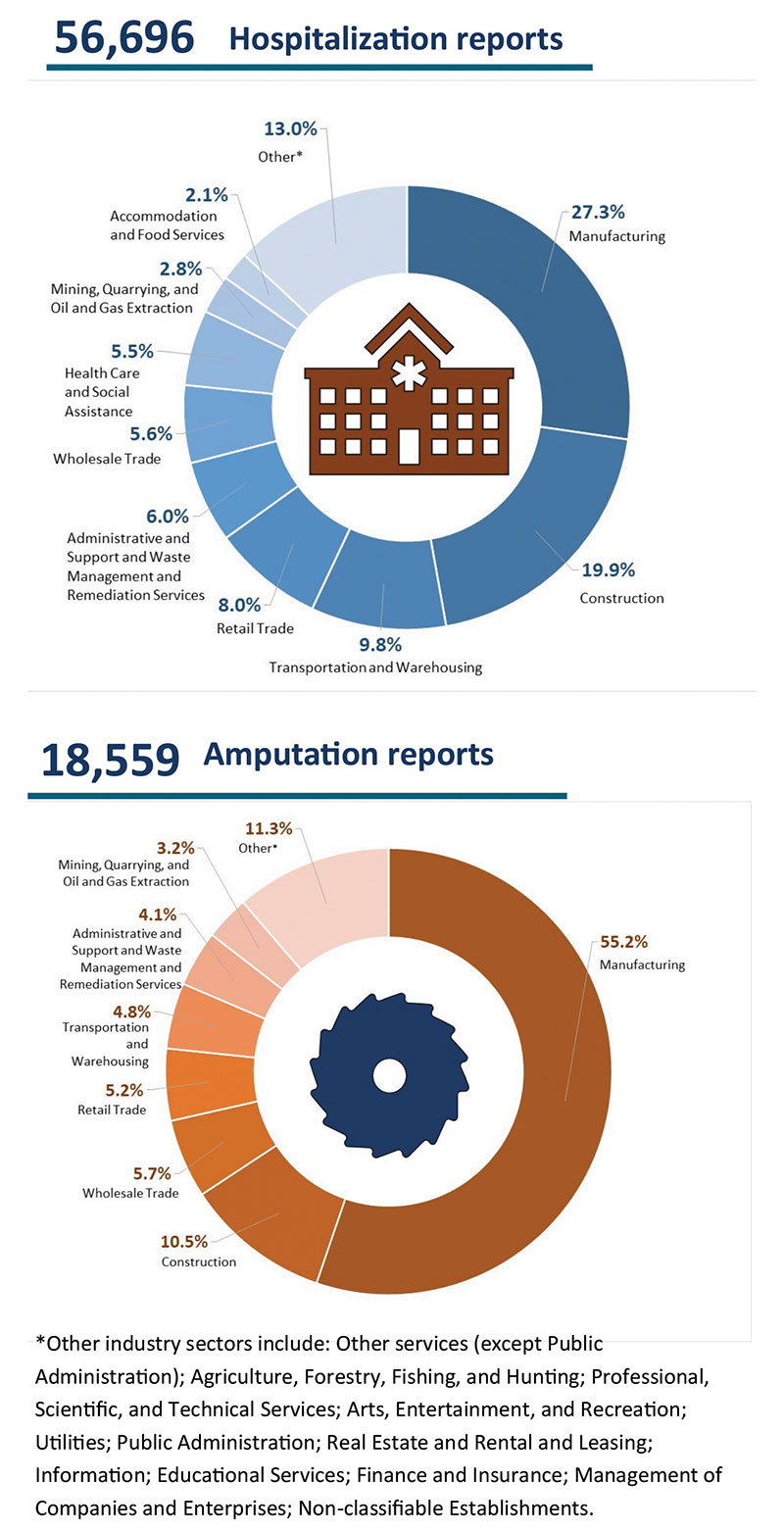
Severe Injury Reporting
Since January 2015, employers have been required to report any work-related amputation, inpatient hospitalization, or eye loss within 24 hours of the event. Employers report these events by calling OSHA’s toll-free number, using OSHA’s online reporting form, or in person at an OSHA office. Once notified of these severe injury reports (SIRs), OSHA follows-up with the employer to collect additional information and discuss how to control hazards and prevent future injuries.
Since reporting began, OSHA received a total of 70,206 severe injury reports from employers under federal OSHA in all U.S. states, the District of Columbia, and U.S. territories. All employers, regardless of size, subject to federal enforcement authority, are included in this report. Private sector employees in State Plans and State and Municipal employees are excluded from this report. This report summary covers approximately half of the U.S. workforce.
OSHA received 56,696 inpatient hospitalization SIRs and 18,559 amputation SIRs from 2015 to 2021. Many amputations are so severe they require inpatient hospitalization; a total of 5,049 reported amputations also required inpatient hospitalization. SIRs involving amputation and inpatient hospitalization are counted as one despite being categorized separately here. Although the loss of an eye is also required to be reported to OSHA, there were no eye losses reported during this period.
This report summarizes severe injuries reported by employers over the past seven years by industry, geography, and injury type, with a focus on select injuries and illnesses.
From 2015 to 2018 the average number of SIRs reported per day increased from 27 to 31. The COVID-19 pandemic likely contributed toward the 20% decrease from 2019 to 2020 due to shutdowns or changes to employment status for millions of workers. Because the Recording and Reporting Occupational Injuries and Illnesses standard (29 CFR 1904.39) only requires employers to report inpatient hospitalizations that occur within 24 hours of the work-related incident that caused the inpatient hospitalization, and the mean incubation period for SARS-CoV-2 ranges from 3-6 days from exposure to onset, COVID-19 hospitalizations were generally not required to be reported.
Table 1 shows the distribution of employer-reported SIRs across industry sectors. While the manufacturing and construction sectors reported the highest proportion of SIRs overall, the mining, quarrying, and oil and gas exploration sector had the highest rate of SIRs per 100,000 Full Time Equivalent (FTE) workers. Mining and quarrying operations are subject to the reporting requirements of the Mine Safety and Health Administration (MSHA), not OSHA.
OSHA covers most private sector employers and their workers in all 50 states, the District of Columbia, and the other United States (U.S.) jurisdictions—either directly through OSHA or through an OSHA-approved State Plan. State Plans are OSHA-approved job safety and health programs operated by individual states rather than federal OSHA. There are 29 State Plans; 22 State Plans cover both private sector and state and local government workers, and seven State Plans cover only state and local government workers.
Figure 2 shows that although SIRs are more concentrated in highly populated cities, severe workplace injuries happen everywhere. All employers covered by federal OSHA must report these incidents to OSHA, even employers who are exempt from routinely keeping OSHA records due to company size or industry. See OSHA’s reporting and recording requirements for more information.
Although the geographic distribution of SIRs in North Dakota appears sparse, this state had the highest average annual rate of SIRs per 100,000 FTE workers (21.9 per 100,000 FTE workers) [see Table 2]. There are many factors which may contribute to SIR rate differences between states, including employer reporting practices, differences in industry operations and/or hazard exposures, or these states may have fewer work-related injuries.
Although the geographic distribution of SIRs in North Dakota appears sparse, this state had the highest average annual rate of SIRs per 100,000 FTE workers (21.9 per 100,000 FTE workers) [see Table 2]. There are many factors which may contribute to SIR rate differences between states, including employer reporting practices, differences in industry operations and/or hazard exposures, or these states may have fewer work-related injuries.
Although work-related severe injuries and illnesses are required to be reported by all employers, OSHA recognizes that these totals are significantly underreported. Average annual SIR rates by state per 100,000 FTE workers should be interpreted carefully. Average rates of SIRs per 100,000 FTE workers by state were calculated using the American Community Survey’s Public Use Microdata Survey, 2015 to 2019. Differential reporting patterns by state, employer, or over time may affect the accuracy of these rates. Readers should consider underreporting while reviewing these data.
OSHA inspectors investigate severe injuries that employers report to OSHA and help to control hazards and prevent future injuries. OSHA compliance officers respond with either an onsite inspection or a Rapid Response Investigation with an abatement certification requirement.
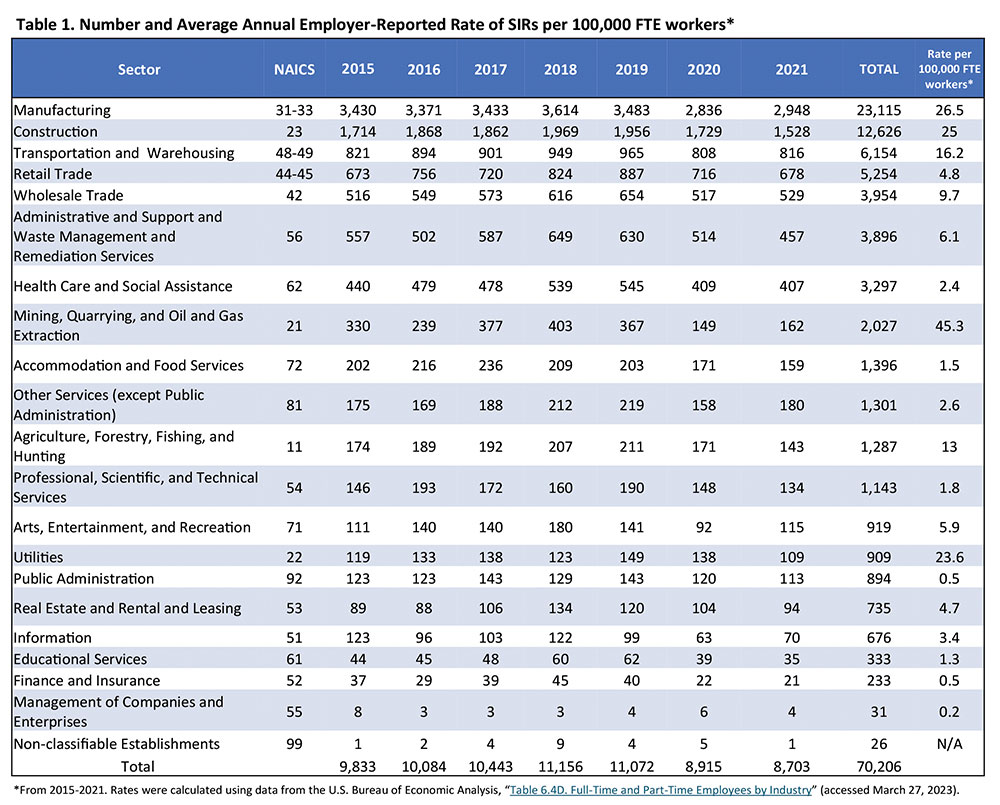
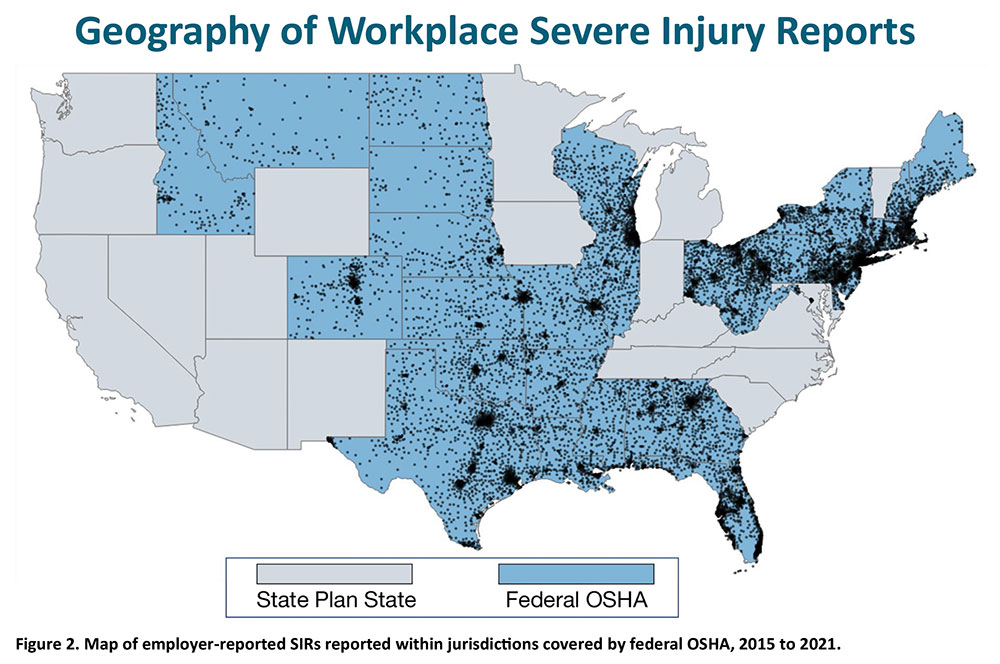

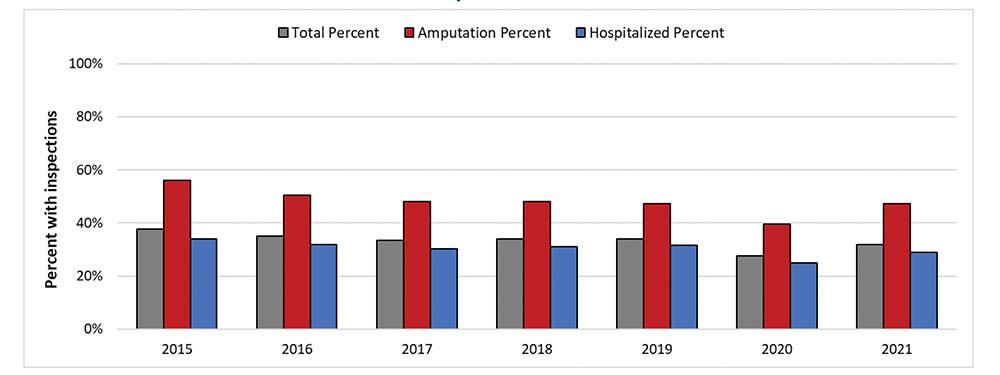
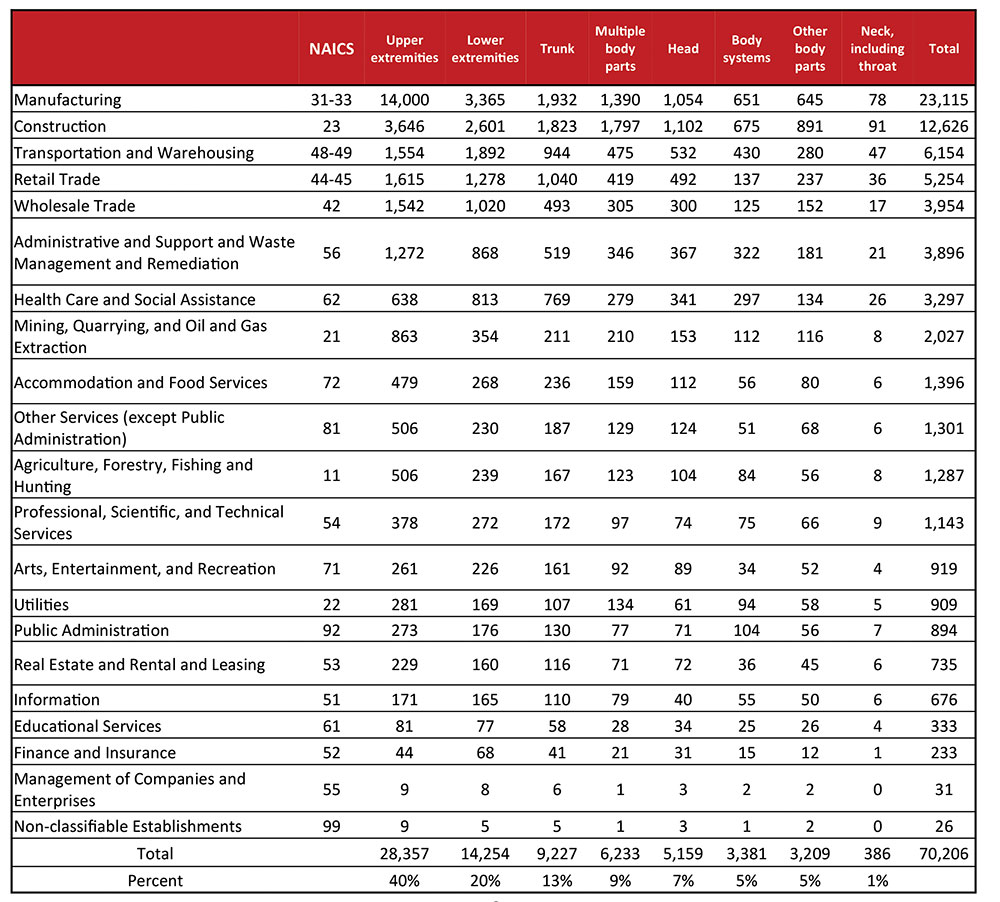
Reporting Can Save Lives and Prevent Additional Injuries
From 2015 to 2021, OSHA inspected an average of 33% of the workplaces where SIRs occurred following the report of the severe injury. As Figure 3 shows, OSHA generally inspects SIRs with amputations associated with those reports, with OSHA inspecting an average of 48% of all amputation reports. On average, OSHA inspected about 33% of SIRs where the employee was admitted to an inpatient ward of a hospital.
Not all SIRs reported will lead to an OSHA inspection or violation. Depending on the circumstances of the report, OSHA inspectors may conduct a rapid response investigation (RRI) in lieu of an onsite inspection. In these instances, employers are expected to conduct their own investigation into the work-related incident and share their findings with OSHA. When an RRI is conducted, an abatement certification or document must be provided. The abatement certification is signed by an official of the company and details the abatement measures that have been implemented to correct the conditions that caused the SIR. This strategy involves all responsible parties to ensure that proper mitigation measures are established to keep workers safe.
The SIR narratives often provide great insight into the circumstances of the injury and potential control measures that could be implemented to prevent future injuries of a similar nature or from a similar cause. Here are some SIR narratives that led to an inspection:
- An employee was attempting to stuff cardboard back into the chamber of a horizontal baler when it crushed their right hand.
- An employee was climbing a scaffold when it
- The employee fell onto the ground and was struck by falling parts of the scaffold, suffering a broken leg and forehead laceration.
- An employee fell down an unmarked, open elevator shaft, hitting the ground and sustaining a back injury that required surgery.
- An employee was welding when there was a dust flash fire and explosion. The employee sustained burns on the hand and the upper torso.
Reporting SIRs is required and is an important step to achieve a safe workplace free from hazards. OSHA compliance assistance staff are available across the country and U.S. territories to help employers.
Workers get injured on the job every day. Some experience amputations. Every worker has a right to a safe and healthful workplace. All occupational injuries are preventable with proper precautions in place.
The federal SIR dataset available on the OSHA webpage includes the injured body part(s). Upper extremities (e.g., arms, hands, fingers) accounted for 40% of all employer-reported SIRs from 2015 to 2021. Looking closer, fingertips alone accounted for over a fourth of all upper extremity injuries (8,246, 29%). Lower extremities (e.g., legs, feet, toes) accounted for 20% of all SIRs reported; of those, 3,270 injuries to legs were reported, accounting for 23% of all lower extremity injuries. Table 3 provides an overall summary of body parts injured by industry sector.
Employers and workers are encouraged to visit OSHA’s Hazard Identification Training Tool webpage for resources on how to recognize and prevent work hazards that could lead to workplace injuries.











Find Us on Socials